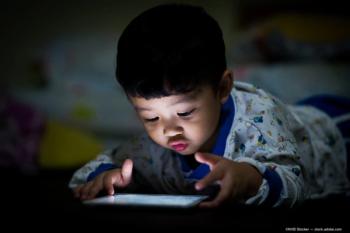
Stephen Nedoroscik brings awareness to strabismus, coloboma at the 2024 Olympic Games
The US gymnast has become an overnight sensation for competing with strabismus and coloboma at the 2024 Olympic Games in Paris.
During the 2024 Olympic Games in Paris, notable names like gymnast Simone Biles and basketball player Lebron James usually take precedence. However, the “Clark Kent” of men’s gymnastics, Stephen Nedoroscik, has become an overnight sensation.
Helping the US men’s gymnastics team take home a bronze medal on July 29 with his incredible performance on the pommel horse, viewers noticed Nedoroscik with his thick black frames, sitting quietly on the sidelines ahead of his event.
Strabismus and coloboma, 2 conditions that Nedoroscik competes with, are pretty common ocular conditions, but neither condition has ever received this much attention in the mainstream.
“Strabismus is a pretty common ocular condition,” said Terri A. Gossard, OD, MS, the national medical director of clinical integration for EyeCare Partners. “Usually, it presents early in childhood but it can develop later in life. There's all different kinds of strabismus. You can have a very, very obvious eye turn. Essentially, strabismus is when your eyes aren't pointed at the same direction, so they're misaligned. It can be one eye that is completely off-center. It could be a very small strabismus that isn't always visible to the naked eye. It could be something that alternates, and I think that is the case in Stephen’s instance where he can decide which eye he's using to fixate.”
Depending on the severity of the frequency of strabismus, Gossard says that it can cause many challenges for children, especially in the learning process. This includes intermittent or constant double vision. If left untreated, she explained that a misaligned eye can lead to the development of amblyopia, or permanent vision loss.
Coloboma is a development issue with the eye. Gossard noted that the condition occurs when the eye is forming in utero and the optic fissure doesn’t completely close, further complicating one’s vision. She explained that Nedoroscik suffers from heightened light sensitivity because the iris in one of his eyes isn’t completely formed, making his Olympic performance even more of an amazement.
When looking at the symptoms of strabismus, Gossard pointed out that patients suffer from a number of vision difficulties.
“Your depth perception is off, you have difficulty judging where you need to be in time and space,” Gossard said. “Certainly, for Steven, he says he really doesn't even use his visual system during his gymnastics. It's all on the touch and on the field. He really relies on the non-visual cues and the tactile cues, so, I don't know how he does it, but he did it.”
So, how did Nedoroscik compete with what appeared to be no difficulty? Gossard believes that practice mixed with visualization helped him dominate the pommel horse.
Now that the gymnast has brought more awareness to both conditions at such a prestigious athletic event, Gossard says people should look for the obvious signs of these problems, especially in children.
“Usually, this is advice I'm giving parents, so as you look at your child, sometimes it's very obvious the parent will see the eye turn,” Gossard said. “It might not be all the time, it might be just when they're focusing up close, but they will notice that there's a visual misalignment. A lot of times, frequent blinking can be a cause. Sometimes, you see some children tilt their heads to one side or the other to help resolve some of that double vision that might be resulting.”
Gossard says that if a child seems to be challenged in depth perception, or if they say they’re experiencing double vision, it’s most likely strabismus. Meanwhile, coloboma is more visible to spot when it’s of the iris or eyelid. However, only a regular routine eye appointment can check for interior coloboma, as many cases of it are invisible.
“We really recommend that you have your child's visual system evaluated in the first year of life,” Gossard said. “And then depending on what you see there at the eye doctor and what the family history of the child is, – between the ages of three and five – it’s important for the development of the eyes and the visual system. I talked about that amblyopia; we certainly don't want that to happen. It's also setting up them to up to succeed in school and in sports, and apparently the Olympics.”
Overall, Nedoroscik’s story is one many viewers will remember for years to come when recalling the 2024 Olympic Games in Paris, but also for his perseverance and energy to overcome these visual conditions.
“Just the optics of it, he just doesn't typically look like an Olympic athlete, you don't normally see those glasses,” Gossard said. “That's what first caught my attention. I think it's just the perseverance of his story. The fact that he realized this was the one event, the one apparatus he could succeed at, and he put all his energy into that despite the challenges visually that he had in front of him.”
Newsletter
Don’t miss out—get Ophthalmology Times updates on the latest clinical advancements and expert interviews, straight to your inbox.



















































.png)


